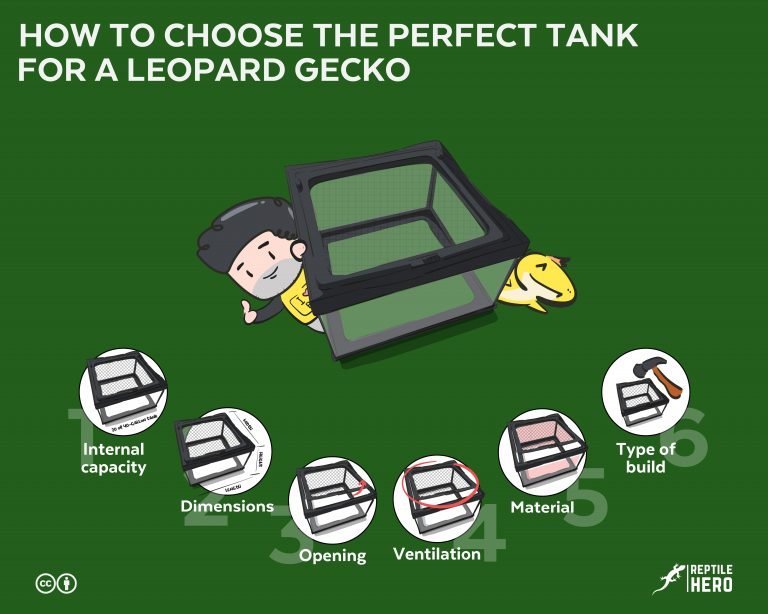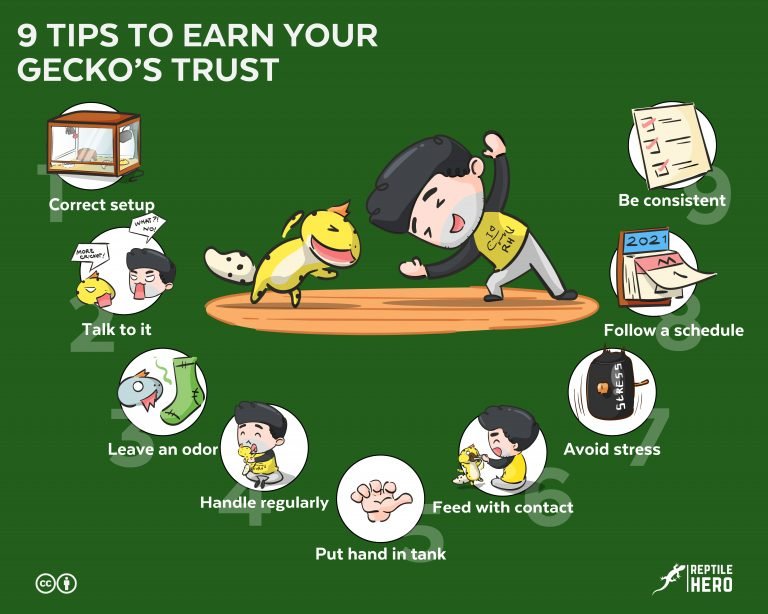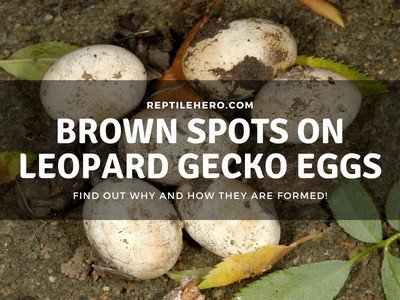Why Do Leopard Gecko Toes Fall Off? (4 Reasons & Solutions)
For most of us, our leopard geckos aren’t just pets, they’re part of our family. So as pet parents, it’s quite worrying to suddenly notice that our precious leo’s toes are disfigured, discolored, or have fallen off. But why does this happen?
Accumulated stuck shed is the most common cause of toes falling off in leopard geckos. Other times, geckos may also lose their toes due to foot injuries, animal bites, and illnesses such as fungal infections. However, such cases can be prevented with updated husbandry practices and treated by exotic veterinarians if necessary.
You’ve probably heard of other people talking about gecko toenails before. But do our fascinating friends even have nails? Find out as I dig into the topic of geckos and their toes!
1. Stuck Shed
When retained shed accumulates on a leopard gecko’s toe, blood circulation gets cut off causing the tissue to die. As a result, the dead portion of the toe will fall off.
It’s totally normal for geckos to shed their skin regularly. Adult leos do it once or twice every 2 months. What’s not normal though, is having several layers of stuck shed on any part of their body.
Most of the time, it’s quite easy to spot any retained patches of shed on a leopard gecko’s body since it’s duller and drier than the scaly skin around it. Sometimes, it even becomes very visible—turning almost completely white.
But there are times when stuck shed is not as easy to see at a single glance, especially when shed accumulates at the very tip of a leopard gecko’s toe or tail.
After a while, pet parents will notice that their gecko’s toes are a bit red and swollen as a result of unremoved shed.
Unless the retained shed has been safely removed, blood flow will continuously get constricted [1]. In turn, the toe will start turning to a dark shade of purple before finally becoming entirely black and falling off on its own.
Solution and Prevention
Avoid having your leopard geckos lose their toes by ensuring that the humidity levels in their enclosure stay within 35–65%. Having a big but shallow water bowl they can readily soak their whole bodies in whenever needed can also help them completely get rid of shed easily.
Check out more ways you can maintain or boost humidity in your gecko tanks!
2. Foot Injury
Toe loss in leopard geckos can happen as a result of foot injuries sustained in and out of their tanks. Falling objects, sharp decors, and strings could cause bloody wounds. Such injuries could lead to toes falling off if left untreated.
As fun as it is to spend time with our geckos while handling them or letting them free-roam around the room, there are lots of potential dangers to keep an eye on!
If you’ve been part of gecko-keeping forums for as long as I have, then you’ve probably heard a couple of horror stories related to toe loss and foot injuries.
Some geckos have had their toes fall off after getting caught in wires and carpet fibers, accidentally stepped on, and crushed after having heavy things fall on their feet. Other leos have also lost their claws after having their tank’s doors close on their toes.
But even inside their enclosures, leopard geckos can lose their toes because of really sharp decors like rocks or splinters from branches. A few years back, it was also common for geckos to lose their tail after getting them stuck in reptile carpets.
Find out which options to stick to and which ones to avoid in our article on gecko substrates!
When your leo does get a foot injury, it’s best to flush it with diluted povidone-iodine or chlorhexidine solution, and then temporarily keep your gecko on paper towels.
Then, apply some topical silver sulfadiazine cream or gel like this one on Amazon to help speed up the healing process.
Do this, regardless of whether or not your gecko’s toe(s) have totally fallen off, to prevent infections. Once you see discoloration and blistering on your gecko’s wounded toes, bring it immediately to your veterinarian for a proper check-up.
Solution and Prevention
Before adding anything to your leopard gecko’s enclosure, closely check if it can possibly hurt your gecko. Smooth out sharp-edged decors and remove splinters from wood.
Always make sure that the room is safe and secure when you let your gecko roam outside its tank. Moreover, be careful whenever you handle your gecko. Don’t just fling it around.
3. Animal Bite
Leopard geckos are likely to have their toes fall off when they get bitten by a cagemate, bigger pets like cats, and leftover live prey. At times, leopard geckos may also inadvertently bite off their own toes while trying to remove stuck shed.
For wild leopard geckos, it’s pretty common to get wounded and bitten in their harsh native homes. However, the chances of this happening in captivity is something we would like to minimize, if not completely eliminate, right? Unfortunately, it still happens.
Most gecko owners, of course, want what’s best for their scaly babies. However, letting leos “play” with other geckos and furry pets so that they “don’t get lonely” will do more harm than good.
Despite forming loose colonies in the wild out of necessity, leopard geckos are still largely solitary creatures. So fights and bites are inevitable if you keep more than one gecko in a single tank—especially if it’s already quite small, to begin with.

Aside from that, it’s important to make new keepers—particularly younger ones—realize that leopard geckos will never be friends with dogs, cats, and most other big pets. Geckos view big animals as potential predators, while common pets see them as prey or toys!
There are also cases where geckos have had their toes chewed out by leftover live crickets [2]. Unlike many other insects, crickets are omnivores so they will pounce on your gecko if they’re desperate enough.
In some instances, geckos may accidentally bite off their toes if the shed tightens and gets really painful. So, again, retained stuck shed is the top cause of toe loss in not only leopard geckos but most other commonly kept gecko species including cresties and tokays.
Solution and Prevention
Keepers and breeders can easily avoid having their leopard gecko’s toes fall off from bite wounds in 4 simple ways:
- Don’t cohab or house two or more geckos together.
- Keep your gecko safe from cats and dogs.
- Never leave uneaten live insects in the gecko tank.
- Make sure your gecko always sheds properly.
4. Illness
A leopard gecko may also have its toes fall off due to complications from various illnesses including infections, vitamin A deficiency, and dry gangrene.
Of all the possible causes of toe loss in leopard geckos, one is rarely ever discussed since it happens a lot less often. Although uncommon, geckos losing toes due to diseases is not unheard of.
I think one of the main reasons this isn’t normally talked about is because proper diagnosis may require extensive medical assessment. You may need to get some blood work done or radiographs taken.
Fungi, bacteria, and parasites can lead to tissue death and subsequent toe loss in geckos that are infected [3]. When left untreated, the infection may spread and eventually put an early end to your beloved leo’s life.
Vitamin A deficiency can also facilitate serious shedding problems in the long run [4]. As mentioned earlier, when this happens constantly, your gecko will likely lose a toe or two.

Leopard geckos with severe metabolic bone disease are likely to suffer from persistent shedding issues since they can’t thoroughly get rid of their molt like other geckos. I’ve seen quite a few leopard geckos that have lost all of their toes because of this.
Similarly, chronic shedding issues could also predispose leopard geckos to develop dry gangrene which could ultimately lead to a gecko’s toes falling off [5]. But many other conditions can also cause this such as hypothermia and dermatitis.
Solution and Prevention
I recommend taking your leopard geckos for visits to an experienced exotic veterinarian every 6 months to better monitor and know how well your lovely gecko is doing in your care.
With the help of your vet, you’ll have a better grasp of what improvement you can still make to help your gecko live a happy and healthy life for a long time. For instance, they will give you advice on proper vitamin and mineral supplementation.
Regular check-ups also allow your vet to spot developing conditions early on. As a result, you can prevent your gecko from experiencing more serious complications which could be life-threatening.
What are Signs of Tissue Death in Leopard Gecko Toes?
There are 2 main signs that a leopard gecko’s toe is dying and will fall off: swelling and discoloration. During such time, the gecko may not present any abnormal behavior like lethargy or anorexia.
In the beginning, the swelling may not be that obvious since leopard geckos do have very small clawed feet [6]. However, as the death of the tissue in the affected toe progresses, the swelling worsens.
The dying toes of geckos start off with a reddish-purple or brown color. But as tissue death advances, the color of the affected toe gets darker until it finally becomes black.

But don’t worry—not all hope is lost even if you see both signs in your gecko’s toe!
An experienced veterinarian will recommend various treatments to either prevent total death and loss of gecko toes or stop it from spreading more. With proper treatment and medication, the affected toe can go back to normal.
In rare cases, surgical removal may be necessary. Even then, leopard geckos can lead very good lives despite missing a toe or even an entire limb.
Do Leopard Geckos Have Toe Nails?
Leopard geckos don’t have toenails like humans. Instead, they have curved and sharp claws at the end of each toe allowing them to successfully climb rocks and branches.
Much like other terrestrial geckos, like the African fat-tailed gecko, leopard geckos don’t have wide sticky toe pads. So they can’t scale walls and ceilings as day geckos can.
Learn how they do this in our article on geckos walking on walls.
To compensate for their inability to climb high and vertical places, like smooth glass walls of enclosures, leos developed long skinny toes with sharp claws at each end.
Our leopard gecko’s claws are just like the rest of the bones in their fingers [7]. However, instead of being rectangular and linear, they taper until the very tip and curve downward.
Thanks to their claws, leopard geckos can efficiently climb rock formations with minimal risk of falling since they can securely latch onto rough and textured surfaces.
Still, you’ll often hear other keepers and breeders talk about claws while calling them toenails.
Further Questions
Can leopard geckos grow their toes back?
Although leopard geckos are capable of regenerating their tails after dropping them due to shock or to escape predators, they can’t regrow their toes or limbs once they are lost. Unlike starfish, partially or completely lost toes, feet, and limbs don’t grow back in geckos.
How many toes does a leopard gecko have?
Similar to most other gecko and lizard species, a leopard gecko normally has 5 toes on each of its 4 feet. In rare cases, geckos may develop extra toes, a phenomenon called polydactyly. One wild korero gecko, for example, was found to have 7 toes on its right front foot. Conversely, some geckos may also have missing toes from birth.
Do you need to trim gecko claws?
Leopard geckos don’t need to have their claws trimmed. However, larger lizards like bearded dragons, tegus, and iguanas require regular claw trimming using nail clippers for cats and dogs. By doing so, owners can easily handle their pet reptiles while caring for them without the risk of getting deep cuts on their skin.
Summary of Why Does a Leopard Gecko’s Toe Fall Off
A leopard gecko may have one or many of its toes fall off due to unresolved stuck shed, injuries, bites, and conditions—including various infections. These can be avoided by providing safe and correct housing along with a well-supplemented balanced diet.
Prevent gecko toes from falling off by keeping an eye out for swelling and discoloration which are signs that the tissue in the area is dying.
Sources
[1] https://lakeshorepethospital.com/wp-content/uploads/2018/07/Gecko-Care.pdf
[2] https://www.petcarevb.com/reptile-care/leopard-geckos/
[3] https://vetmed.illinois.edu/pet-health-columns/fungal-problem-bearded-dragon/
[5] https://vet360.vetlink.co.za/5733-2/
[6] https://yarmouthvetcenter.com/toe-tail-and-limb-necrosis-in-lizards.pml
[7] https://biomechanics.ucr.edu/Zhuang_et_al-2019-Journal_of_Morphology.pdf




![8 Reasons Why Your Gecko Bury Itself? [Crested and Leopard]](https://www.reptilehero.com/wp-content/uploads/2021/02/Gecko-Bury-cc-768x614.jpg)

![9 Woods Safe For Gecko Tanks [and 16 to Avoid]](https://www.reptilehero.com/wp-content/uploads/2021/04/Wood-Avoid-Gecko-Tank-768x614.jpg)